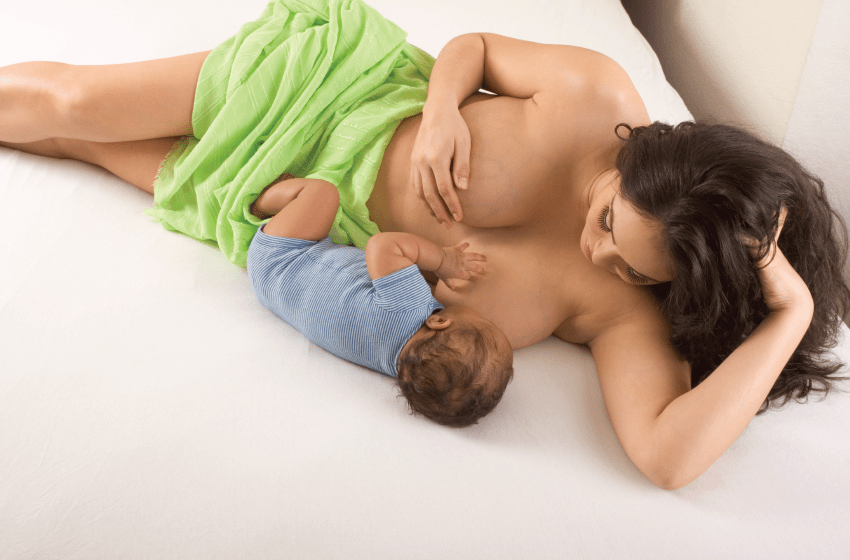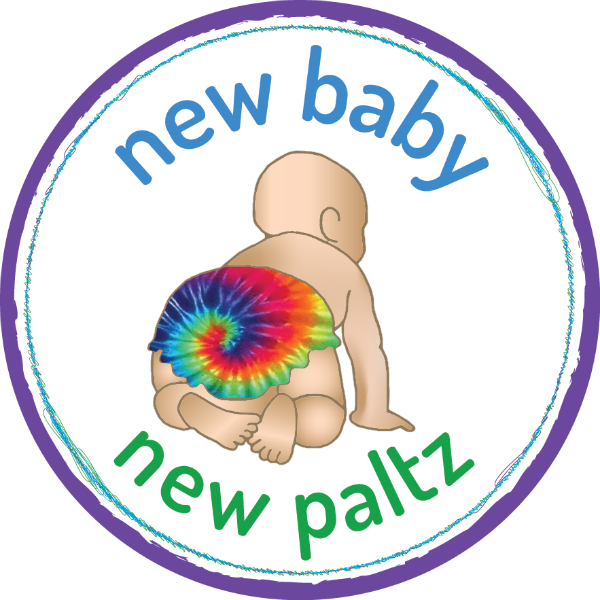
Should I Sleep With My Baby?
How can families who breastfeed get the most sleep every night? And protect their precious baby from harm, while doing so?
Soon after beginning breastfeeding, nearly every breastfeeding parent has fallen asleep while breastfeeding, without regard to safety. The stark warnings against sleeping with your baby, fade into a haze of exhaustion. It is a dangerous way of dealing with a life and death problem, that has a fairly easy solution. Setting up a safe sleep environment for your whole family, including your baby, is easy.
Families are a group of people with varying needs for sleep, and each member has a highly specific sleep environment. Think of how you sleep when you travel. It can take a bit to adjust to a different pillow, new sounds, the smell of the sheets, and the location of the room.
A tired family is a cranky family.
Sleeping situations are highly individual for each person, and they change over time, with each stage of child development, and with family situations, and circumstances. When a baby or child is teething, or learning to crawl; when a parent has a deadline at work, or is sick; when a family is traveling, or moves into a new home; these all effect how each family member sleeps, and cumulatively, the exhaustion level of the whole family.
Sleep American style
Most parents sleep together. They enjoy the closeness and intimacy that comes with sharing sleep, and it comes as a shock, to find that their baby, or child, also enjoys it too! After all, babies are expected to sleep alone. Everybody has told you to get a crib, bassinet, pack and play, a stroller and a swing, so your baby has someplace to sleep. Great care went into selecting just the right equipment, and now when your baby is placed in it, they cry.
Sleep Anthropological style
Babies and children need to cuddle and feel the closeness, security and safety of a nearby parent. For new babies, it is so important, that the American Academy of Pediatrics strongly recommends that babies sleep in their parent's bedroom. One of the top risk factors in Sudden Infant Death Syndrome (SIDS) is sleeping while away from parents, whether in a separate bedroom, or in a day care situation.
Everyone needs to sleep and everyone needs to sleep safely.
With these guidelines you can virtually eliminate overlying, or suffocation risks, and reduce your baby’s risk of (SIDS) to at, or below, sleeping alone in a crib.
Breastfeeding plays a vital role in reducing SIDS.
Dr. James McKenna, a renowned sleep researcher, has repeatedly shown how formula fed babies sleep very differently from breastfed babies. Following his recommendations, if your baby is formula fed, your baby must sleep on a separate surface near you, never in the same bed.
To safely sleep with your baby
You need to be:
• The breastfeeding parent
• A nonsmoker
• Sober
Your baby needs to be:
• Healthy and full-term, at least 38 weeks gestation
• Lying on their back when not nursing
• Dressed only in a onesie, light sleep sack, or pajamas
You both need to be on a safe surface.
A “safe surface” is a firm, flat mattress with only one pillow for the breastfeeding parent. There can only be a sheet and light blanket for covering.
Here are the "NO's"
• No memory foam mattresses
• No comforters
• No crevices where baby might become entrapped, e.g. sofas and recliners
• No older children in the bed
• No pets in the bed
• No smoking or wood stoves in the home
• No alcohol, street drugs, or medications that make you sleepy
Babies generally stay close to the breastfeeding parent.
If you have a partner, discuss whether they feel comfortable next to your baby. In most bed sharing arrangements, the baby sleeps on one side of the bed, the breastfeeding parent in the middle, and the non-breastfeeding parent on the other side of the bed.
Breastfeeding families have many solutions to parenting at night!
Create a side-car set up with either a crib designed to be attached to an adult bed, or move a crib next to an adult bed. If you use this solution, be sure to fill the crack between the crib mattress and the adult bed, with tight-fitting rolled-up towels. Crevices can trap babies and lead to suffocation and strangulation.
Many nights, parents will start the baby in the crib, then bring them into the parent's bed in the wee hours of the morning.
Some families have a twin mattress on the floor next to the parent's bed. The breastfeeding parent lies down with the baby, and moves to the bigger bed after the baby falls asleep.
Many non-breastfeeding parents move to the sofa, or guest bedroom, on nights when baby is teething and pulling an all-night-breastfeeder.
As babies grow, their sleep patterns and needs change. The peak risk for SIDS is four months, so you can feel more at ease with bed sharing after this point.
Breastfeeding at night does not have to become a marathon of sleep deprivation.
With knowledge of the parameters and preparation (and hard data backing it up), bed sharing can be another way for everyone in your family to feel rested, and more bonded.
